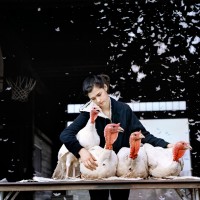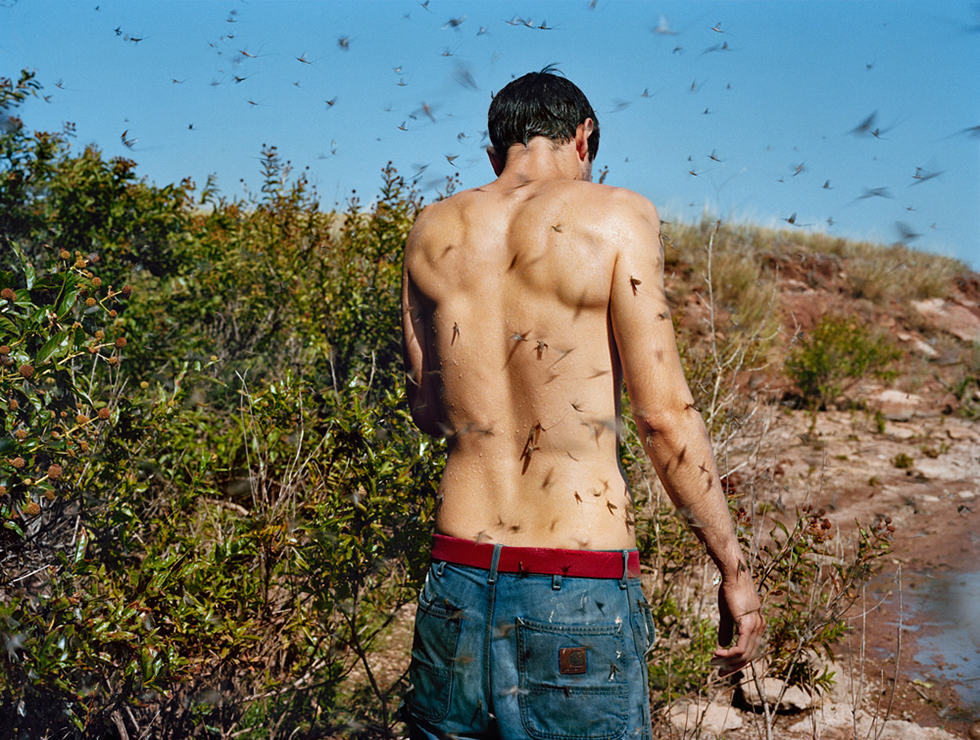Holly Lynton’s Bare Handed


Sienna, Turkey Madonna, Shutesbury, Massachusetts (2010), C-Print. [courtesy of the artist and Dina Mitrani Gallery].
In Bare Handed, Holly Lynton’s photographs explore the relationship between man and his/her environment through the perspective of small farmers attempting to resist the increasing corporatization of the agricultural industry. In a world where the term “sustainable” has become a trendy buzzword, Lynton attempts to connect the viewer to honest hand-crafted tradition, as contrasted with the sanitized offerings of Whole Foods. This photographic journey is not merely a timely essay; Lynton escaped the hustle of the city years ago for New England farm life in an effort to “embrace its ethos of sustainability and local farming. “
Lynton’s choice of medium also connects directly to her desire to slow down. In a world where many photographers prefer digital cameras and the instant access to each image, Lynton uses film. One has to compose, shoot, and often pray that what was desired was captured. Some young artists have opted to use film in an effort to work slower and purer than by using digital cameras.
Holly Lynton is a Yale and Bard educated artist who has taught at both Amherst College in Massachusetts and the Aegean Center for the Fine Arts in Paros, Greece. Lynton has exhibited throughout the United States and Europe, but this is the artist’s first solo exhibit at the Dina Mitrani Gallery.
Through her artist statement, viewers learn that Lynton is not only seeking to make observations about farming in New England, but also wants her imagery to connect on a metaphysical level. “Not always overt, I look for gestures and draw inspiration from religious paintings, mythology, and iconic tales of struggle to convey a sense of mysticism that is in the everyday.” There is certainly a sinewy connection to such grand aspirations within the compositions in many of her images.
Shorn, Shutesbury, Massachusetts features a sheep shearer lovingly sheering the wool off a limp and languid sheep and yet has a striking resemblance to Michelangelo’s La Pieta. Even though the gestures are not exactly the same and the man’s body looms a bit awkwardly over the sheep, the tenderness that the sheep shearer exudes is clearly that of a parent holding a child. Likewise, Sienna, Turkey Madonna, Shutesbury, Massachuetts depicts a woman lovingly huddling together four turkeys with a maternal protective tilt of her head, as the viewer sees a basketball hoop in one corner and feathers flying in the other. Is she leading them to slaughter? Feeling guilty? Or protecting them as she would her own young children?
Les, Amber, Honeybees, New Mexico (2008) C-Print. [courtesy of the artist and Dina Mitrani Gallery.]
The conflict of man versus nature is evident throughout this exhibition. The tension of the love-hate relationship between farmers and their work is also manifest. And by avoiding the paraphernalia of modern corporate farming, Lynton links the viewer with a dance and rhythms that have endured for millennia.



